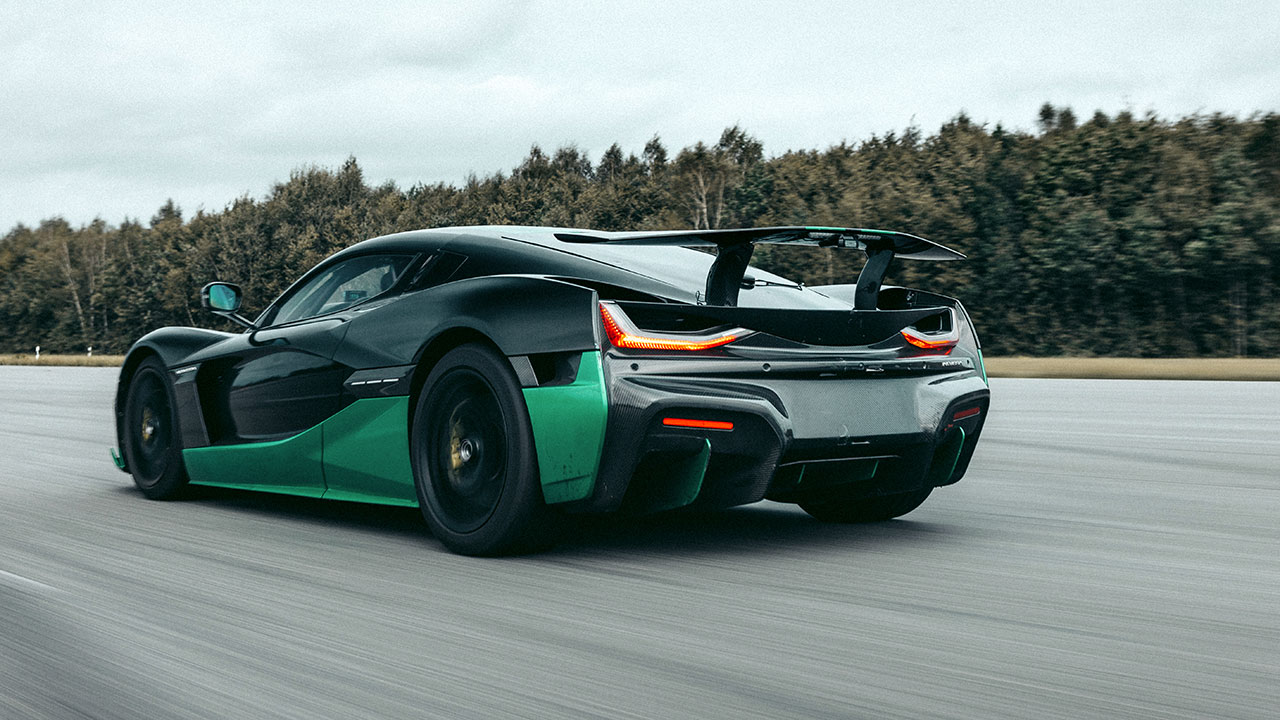Verified by Guinness World Records and measured by Dewesoft, the Nevera now holds the title for fastest speed in reverse. The Automotive Testing Papenburg facility in Germany hosted the record breaking event, where the Nevera had previously shattered over 20 records for acceleration and braking in one day, as well as achieving its top speed of 256mph (412km/h). Finished in the Time Attack Edition design used in previous record-breaking runs, the Nevera achieved a top speed of 171.34mph (275.74km/h).
Unlike an internal combustion engine car, or even some electric cars, the drivetrain of the Nevera has no gears – the four individual motors either go backwards or forwards but it’s always one relentless wall of acceleration right the way from standstill. That means that the same powertrain capable of delivering 0-100 mph in 3.21 seconds or 0-200 mph in just under 11 seconds forwards could also deliver similar earth-shattering performance travelling backwards.
“It occurred to us during development that Nevera would probably be the world’s fastest car in reverse, but we kind of laughed it off. The aerodynamics, cooling and stability hadn’t been engineered for travelling backwards at speed, after all. But then, we started to talk about how fun it would be to give it a shot. Our simulations showed that we could achieve well over 150mph but we didn’t have much of an idea how stable it would be – we were entering unchartered territory.” said Matija Renic, Nevera chief program engineer.
Rimac Nevera
The all-electric Croatian hypercar is powered by four surface-mounted magnet motors, each driving a wheel. Together, they generate 1,888 horsepower (1,914 PS) and 1,741 lb-ft (2,360 Nm) of torque.
The Nevera can sprint from 0 to 60 mph (0-97 kph) in 1.74 seconds, covers the quarter mile in 8.25 seconds, and hits 249 mph (400 kph) in 29.93 seconds.
The hypercar still holds the record set back in August for the fastest production EV at the Nurburgring, where it ran a lap in 7 minutes and 05.298 minutes.
Source: Rimac


